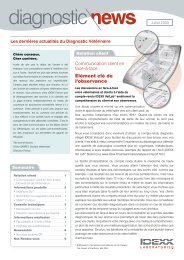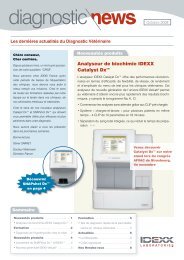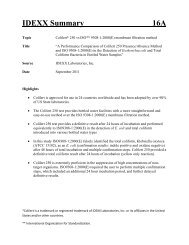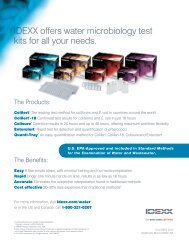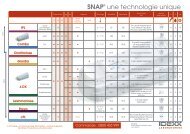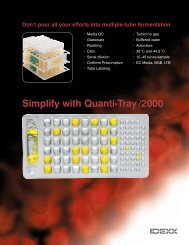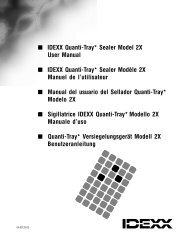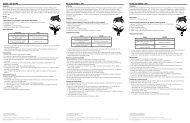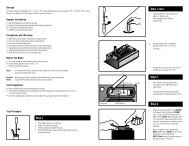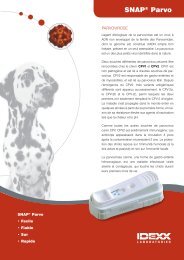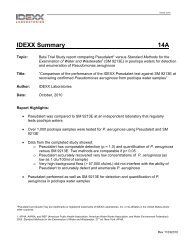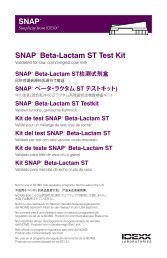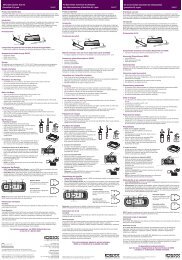ENVIRONMENT AGENCY The Microbiology of Drinking Water (2002)
ENVIRONMENT AGENCY The Microbiology of Drinking Water (2002)
ENVIRONMENT AGENCY The Microbiology of Drinking Water (2002)
- No tags were found...
Create successful ePaper yourself
Turn your PDF publications into a flip-book with our unique Google optimized e-Paper software.
DD1<strong>The</strong> enumeration <strong>of</strong> coliform bacteria and Escherichia coli by a defined substratemost probable number techniqueIntroductionTests for coliform bacteria and Escherichia coli (E. coli) are the most importantroutine microbiological examinations carried out on drinking water. <strong>The</strong>y provide themost sensitive means for detecting faecal contamination, for assessing theeffectiveness <strong>of</strong> water treatment and disinfection, and for monitoring water quality indistribution. <strong>The</strong> significance <strong>of</strong> E. coli and coliform bacteria in water treatment andsupply are described elsewhere (1) in this series.D2ScopeThis method comprises a most probable number (MPN) technique and is suitable forthe examination <strong>of</strong> drinking waters, including samples from all stages <strong>of</strong> treatmentand distribution, and those source waters <strong>of</strong> moderate to high turbidity.Users wishing to employ this method, or similar methods from other manufacturers,should verify the performance under their own laboratory conditions (2) . Details <strong>of</strong>evaluation trials are reported elsewhere (3) .D3DefinitionsDefined substrate media are chemically defined formulations containing substrates forthe specific detection <strong>of</strong> diagnostic enzymes associated with a particular group <strong>of</strong>organisms.In the context <strong>of</strong> this method, organisms which are oxidase-negative and produceβ-galactosidase, as demonstrated by the production <strong>of</strong> a yellow colour through theenzymatic cleavage <strong>of</strong> ortho-nitrophenyl-β-D-galactopyranoside in a defined substratemedium, are regarded as coliform bacteria. In addition, organisms which produceβ-glucuronidase, as demonstrated by the production <strong>of</strong> a yellow colour and blue-whitefluorescence (under long wavelength ultra-violet illumination) through the enzymaticcleavage <strong>of</strong> 4-methylumbelliferyl-β-D-glucuronide in a defined substrate medium, areregarded as E. coli.Coliform bacteria are considered to be members <strong>of</strong> genera or species within theFamily Enterobacteriaceae, capable <strong>of</strong> growth at 37 °C, that possess β-galactosidase.This definition includes anaerogenic (ie non-gas producing) strains. <strong>The</strong> followinggenera have been commonly isolated in routine practice: Citrobacter, Enterobacter,Escherichia, Hafnia, Klebsiella, Serratia, Yersinia, Buttiauxella, Leclercia.For the purposes <strong>of</strong> water examination E. coli have historically been regarded asmembers <strong>of</strong> the Family Enterobacteriaceae which ferment lactose or mannitol at 44 °Cwith the production <strong>of</strong> acid within 24 hours, and which produce indole fromtryptophan. Most strains produce β-glucuronidase. Strains which possess thesecharacteristics at 37 °C but do not express them at 44 °C may also be E. coli. When44



